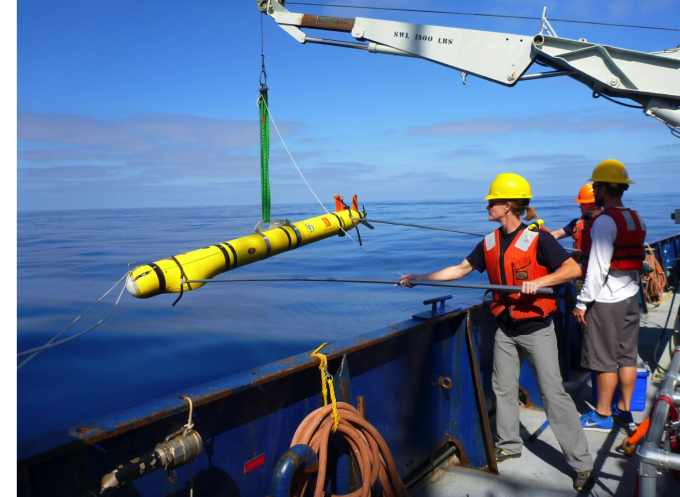Along with my co-authors Kelly Benoit-Bird and Mark Moline, I would like to bring to your attention a paper recently published in Proceedings of the Royal Society of London B (Biological Sciences) entitled Predator-guided sampling reveals biotic structure in the bathypelagic. The full reference, online location, and full abstract are provided below. We are happy to provide .pdf copies of the article on request by email (Brandon.Southall@sea-inc.net or kbenoit@coas.oregonstate.edu) as a professional courtesy.
Thanks,
Brandon Southall

Benoit-Bird KJ, Southall BL, Moline MA. 2016. Predator-guided sampling reveals biotic structure in the bathypelagic. Proc. R. Soc. B 283: 20152457. http://dx.doi.org/10.1098/rspb.2015.2457
http://rspb.royalsocietypublishing.org/content/283/1825/20152457.abstract
We targeted a habitat used differentially by deep-diving, air-breathing predators to empirically sample their prey’s distributions off southern California. Fine-scale measurements of the spatial variability of potential prey animals from the surface to 1200 m were obtained using conventional fisheries echosounders aboard a surface ship and uniquely integrated into a deep-diving autonomous vehicle. Significant spatial variability in the size, composition, total biomass, and spatial organization of biota was evident over all spatial scales examined and was consistent with the general distribution patterns of foraging Cuvier’s beaked whales (Ziphius cavirostris) observed in separate studies. Striking differences found in prey characteristics between regions at depth, however, did not reflect differences observed in surface layers. These differences in deep pelagic structure horizontally and relative to surface structure, absent clear physical differences, change our long-held views of this habitat as uniform. The revelation that animals deep in the water column are so spatially heterogeneous at scales from 10 m to 50 km critically affects our understanding of the processes driving predator–prey interactions, energy transfer, biogeochemical cycling, and other ecological processes in the deep sea, and the connections between the productive surface mixed layer and the deep-water column.
